The Best Laid Plans.
Posted on | April 9, 2012 | 7 Comments
Just what I (never) expected. I couldn’t help but notice there was a disparity between the tomato transplants in the greenhouse. The seedlings transplanted into straw bales had the benefit of the decomposing straw to warm their roots, provide nutrients, and provide consistent moisture. The seedlings transplanted into plastic pots just had potting soil and were set into a tray of water to keep them from drying out. According to my (internet search done at work) research, the tomatoes in the straw bales would grow quickly and vigorously. Which meant they would remain in the greenhouse, providing early tomatoes by May in order to (make the neighbors jealous) make fresh salads while cool season greens were still growing in the garden. The tomatoes in pots would develop slower, making them perfect for transplanting into the garden by end of May when the soil is warm, nighttime temperatures don’t drop below the 60’s, and the greenhouse is getting too shaded for good production. It was an (idealistic and naive) in-depth and deliberate plan.
How (predictable) surprising that it didn’t work out that way. Like all of my best laid plans, it hit a snag. Despite the extensive (anecdotal) documented evidence on the Web, the tomatoes in the straw grew slowly. And the tomatoes in the pots grew like rocketships reaching for the sky. You probably think I’m (making it up so I have something to post about) exaggerating. See for yourself:
Obviously, there’s been some kind of complication. Perhaps the straw bales aren’t (being watered as directed on the straw bale gardening sites because, I mean, who has time to water them and add nitrogen every day???) decomposing fast enough, so the roots are compressed and the plants’ growth is slowed. Maybe the MetroMix growing medium that I used in the pots because it (was what was available at the feed mill) was highly recommended is as great as proponents claimed. No matter what, I needed to adjust my plan.
Originally I (guessed) reasoned the best bet was to go ahead and put the large tomato plants in the garden. We’ve had an unseasonably warm spring and with daytime temperatures getting as high as the 80’s they should (die quickly) make the adjustment fine without having to harden them off. Of course, that kind of thinking instantly summoned a cold front and a frost warning. I’m very (unlucky) powerful like that. I realize you don’t believe that I can conjure weather. Please (see my previous post—how dare you not keep track of what’s going on in my life??!!!) note that cold weather arrived as soon as I switched all the kids clothing in their drawers from sweatshirts and jeans to T-shirts and shorts. I mean, how more (unlucky) powerful can you be?
I decided the circumstances required a Plan A and Plan B. Plan (Crap,-This-Is-Going-To-Take-All-Day!) A involved dividing the large tomato plants. One of each tomato variety would be transplanted into bigger and deeper containers in the greenhouse and would stay there to provide hothouse tomatoes. The remaining large tomatoes would have to stay in their small containers until April 27th–after the final frost date in our area of April 15th and a favorable lunar sign for planting. Then they’d be moved to tomato cages wrapped in plastic in the garden to harden off. The smaller and slower growing tomato plants in the straw bales would now become the tomatoes to be transplanted in the garden in May to provide a second harvest of tomatoes.
Plan (Oh Well, Sh*t Happens.) B meant keeping the transplants in their pots or or straw bales until the weather was suitable and hoping they didn’t die from being root bound or got so large that they suffered transplant shock when finally moved to the garden. If they started to droop and die before the weather stayed warm, they’d be frantically transplanted in the garden, regardless of the weather, hoping for the best. Plan B was less time consuming but more likely to involve desperation, failure, and drinking to drown one’s sorrows. But then that’s Plan B’s M.O., isn’t it?
So Big was put in charge of preparing the garden for Plan B. The tomato beds hadn’t been messed with since we had a killing frost in November of last year. Leaving the beds untilled (sure is easier than hoeing all that mess up) preserves beneficial bacteria and fungi in the soil and letting organic matter grow on the surface (sure beats weeding) provides an easy nitrogen source prior to planting. Big started with this:
He weeded…
…added a bucket of compost…
…replaced the cages and stakes…
…and hammed it up for the camera…
…until finally each tomato plant had an emergency Plan B bed that looked like this:
Meanwhile, Pretty and I commenced with Plan A in the greenhouse. We dismantled the shelves and pulled out the 55 gallon drums so we’d have room for large containers. We reclaimed the 2 pots that my magnolia trees came in, a 4 sided wooden container with no bottom (???) and the concrete blocks that had been holding up the shelves in order to make larger planters for the big tomatoes. Then we filled the containers with topsoil from a pile The Other Half left next to the greenhouse for just these type of plan changes. We planted the tomatoes and put cages around them. The straw bales with small tomato plants were lined up in front since there’s no worries about them blocking the light to the larger plants. And, finally, the remaining large tomatoes were put in the center of the greenhouse and stakes put in their pots to at least keep them from flopping over. Basically we flipped our greenhouse. Flipping is not actually as fun as they make it look on cable TV. Which is one of the (annoying) amazing things about farming. Just when you finish a project, you get to redo it. It’s truly (discouraging) exhilarating. In any case, here’s Plan A:
Now we’ll just wait and see what the weather does and how the plants grow over the next few weeks. Will it get warm enough to put those large plants outside in the garden before they get root bound and die? Will the small plants continue to grow at a slow rate until May or they will get stunted and die in the bales before then? I’m not saying there’s a Plan (Really? Again?) C but as Pretty and I put away our tools, she asked,
“They do still sell tomato transplants at the store, right?”
“Yes,” I sighed. “They do.”
So, will it be frozen tomato plants:
Or wilted tomato plants:
Too close to call, tomato fans, too close to call.
Tags: compost > garden > greenhouse > seedlings > straw bales > tomatoes > transplants
Comments

7 Responses to “The Best Laid Plans.”
Leave a Reply
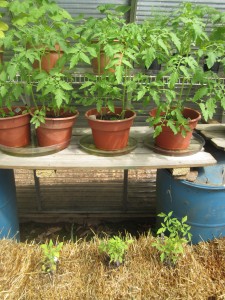
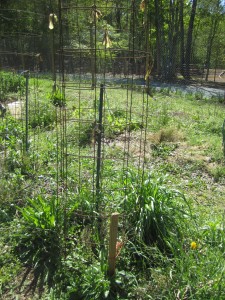


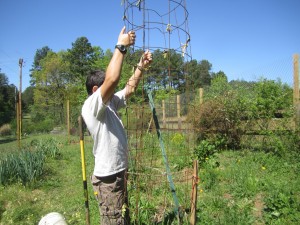
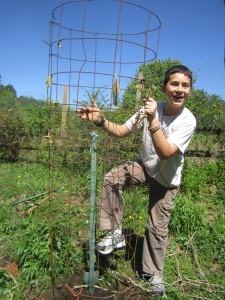
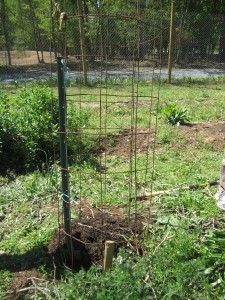

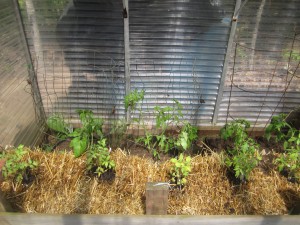

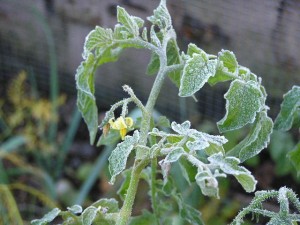
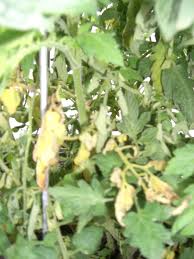



April 9th, 2012 @ 5:17 am
I love plans.
Yesterday I had a plan for how to make trimming the goat hooves easy.The goats had a plan, too. It wasn’t mine.
My tomato plan is to buy 6 perfect plants at the exact right moment to put them in the garden. What could go wrong?
–Terry at HenCam.com
April 9th, 2012 @ 1:44 pm
That’s a lot of thinking and planning for tomatoes, I say. We just buy the plants at the garden center and stick ’em in the ground when it’s warmer. But then again, there is no challenge that way. 😉
April 10th, 2012 @ 8:54 am
Hilarious post! I bet you end up with some great tomatoes. One word of caution – you should not plant tomato plants in the exact same location in your veggie garden year after year. Rotating to a different bed each year prevents disease and pest invasions.
I’ve done the straw bale thing and believe me, those babies will catch up and grow grow grow. Keeping them wet is more important than adding anything else to the bales. My only concern is that the bales are in a gh where it’s going to get overly warm. I would have put the bales outside and kept the ones in buckets in the gh.
But I still think you’re going to get some great tomatoes. Those plants in the buckets look fantastic.
April 10th, 2012 @ 9:57 am
If you finally get the straw bale plan to work, please let us know HOW! I have had no luck with it at all!
The one and only benefit of straw bales that I could find was that their decomposition put off enough heat to keep my cold frame very happy on frigid nights. Otherwise, not as promoted. 😐
~ Lynda
April 11th, 2012 @ 11:08 am
Oh my goodness-I feel like saying ‘bless your heart’ and laughing at the same time : ) I bet it all works out in the end though. I always wondered about the straw bales-but have never tried them.
April 12th, 2012 @ 7:55 pm
I’ve never had a green thumb. I’m jealous of your abilities. I wish I had a garden.
June 8th, 2014 @ 8:00 am
Sorry your tomatoes didn’t seem to thrive in your straw bales. I’m basically a lazy gardener and have asthma so digging in the dirt just isn’t for me–I only use straw bales. One thing I have learned is that once you get your bales started (I use Miracle Gro) you need to prep your tomato bale with tomato specific fertilizer. Most straw bale sites recommend a high Nitrogen fertilizer but with tomatoes, you’ll get all vine and no fruit on that diet. It happened to me last year. I did some research and found tomatoes like more phosphorous and calcium is also essential. This year I started using Dynamite Mater Magic and all three varieties I planted are growing and fruiting abundantly. Hope this helps.